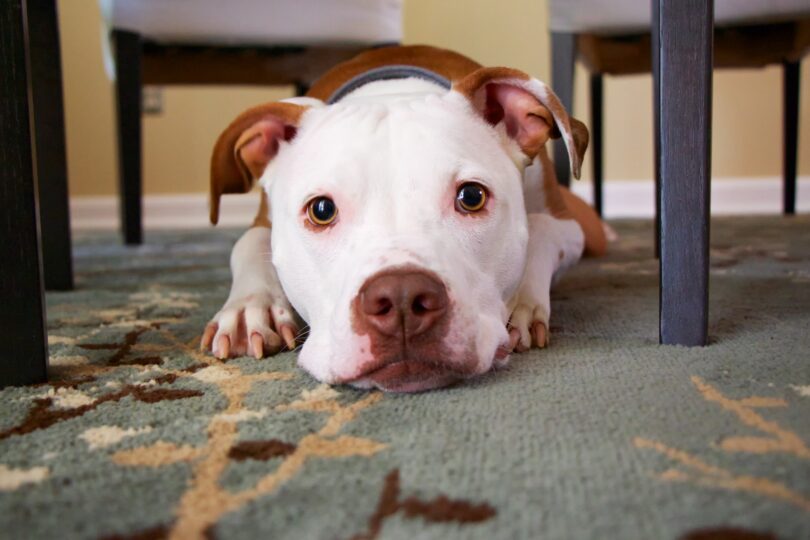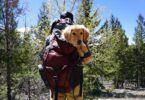There are few things that can be as devastating for dog owners as being a dog that is scared. Particularly in the event that your pet is scared of you, which could make any dog owner feel helpless and lack any idea about what they should do.
If you’re wondering “my dog is scared of me” and you’re looking for an answer then you’re in the right place. In this post, we’ll cover all the crucial aspects of training your dog to be fearful and show you how to deal with the issue.
How to Know if Your Dog is Scared

For those who aren’t experienced with dog ownership the task of identifying a dog that is timid could be a difficult task however there are obvious indicators to identify that will aid in identifying the issue. The most important thing to be aware of when it comes to fearful canines is the fact that they mostly communicate via the body which means that in order to detect fear in your dog, you have to detect non-verbal cues.
Sometimes, when people tell you “my dog is scared of me,” they could not understand the signals and are drawing the wrong conclusion. Some of the most noticeable signs to be looking for are those that are easy to spot like flattened ears or tails tucked in between hind legs or avoiding eye contact.
There are other subtle indicators you might not notice, for example, excessive crying, lip licking or hair that is raised on the neck’s back, or even constant scratching. There are other signs that could indicate the dog is afraid by crying, pacing, clinginess of a dog, submissive urination and even biting. Dogs may be shaking, drooling or even panting because of fear. 1 To confirm your dog may be suffering from anxiety, it is important to be aware of the symptoms listed above and aware of the various indicators that indicate something is wrong.
Common Dog Phobias
If someone says “my dog is scared of me,” they probably observe certain behavior or signs mentioned above, and assume the dog is scared of them. But, this may not be the case all the time because there are a variety of reasons for a dog to be afraid. As with humans, dogs are prone to developing diverse fears throughout their lives.
The most frequent dogs’ fears are loud sounds like fireworks, thunderstorms, and even the vacuum, could observe that your dog scatters when the loudest sound that it hears.
A lot of dogs suffer from anxiety about separation and are scared of separation from family members. If you notice your dog experiencing fear-related symptoms when you’re getting ready to leave this is a clear indication that your dog isn’t scared of you, but rather of being separated from you.
Another major pet phobia is automobile rides. While many dogs enjoy them, some have negative feelings, particularly when they’ve been taken to a shady location like the vet’s office.
In addition, some dogs could even be scared of children because children may not know how to behave with dogs in a safe way and might have hurt their pets before. 2
What to Do If Your Dog is Fearful

When you think about ways that can help a timid dog become more confident the first response of many is to coddle and soothe the dog. However, it’s often the opposite approach which is the most effective for dogs. This also lowers the likelihood of damaging dogs’ fear.
For example, when you’re teaching a dog who is scared to be scared then you must be sure you’re not encouraging fearful behavior by cuddling, stroking, or even placing the dog on your lap. Dogs are bound to see this kind of behavior as a reward for their fear and will decide this is the correct response to the situation, based on their actions.
Another option to help an anxious dog in need is to wrap them in swaddles. There are many Swaddle shirts for dogs that provide a gentle yet firm pressure that can be soothing for dogs.
Then, you can slowly reduce the dog’s fear by exposing them to the fear in a controlled environment. This is a more sophisticated method, and we recommend consulting or seeking assistance from a reliable dog trainer. If you do it wrong this could result in an increase in the fear response. It’s recommended to speak with an expert animal trainer or a veterinarian usually to determine the most efficient and secure way to proceed. 3









Leave a Comment